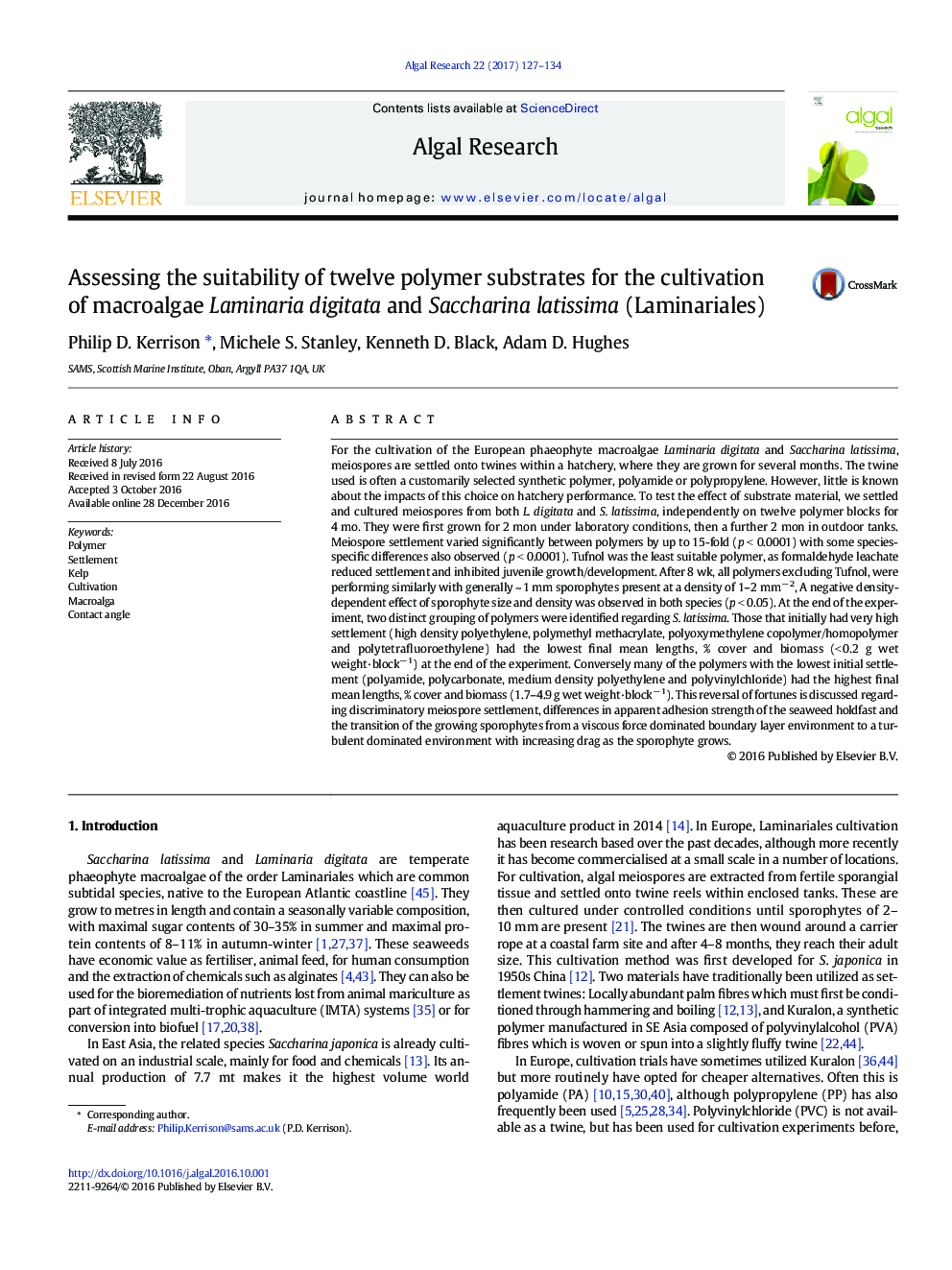| Article ID | Journal | Published Year | Pages | File Type |
|---|---|---|---|---|
| 5478430 | Algal Research | 2017 | 8 Pages |
â¢Settlement density of kelp meiospores varied 15-fold between twelve polymers.â¢At 16 wk., polymers with the highest settlement had the lowest biomass and vice versa.â¢MDPE, PVC, PA and PC had the highest final biomass and are recommended as substrates.
For the cultivation of the European phaeophyte macroalgae Laminaria digitata and Saccharina latissima, meiospores are settled onto twines within a hatchery, where they are grown for several months. The twine used is often a customarily selected synthetic polymer, polyamide or polypropylene. However, little is known about the impacts of this choice on hatchery performance. To test the effect of substrate material, we settled and cultured meiospores from both L. digitata and S. latissima, independently on twelve polymer blocks for 4 mo. They were first grown for 2 mon under laboratory conditions, then a further 2 mon in outdoor tanks. Meiospore settlement varied significantly between polymers by up to 15-fold (p < 0.0001) with some species-specific differences also observed (p < 0.0001). Tufnol was the least suitable polymer, as formaldehyde leachate reduced settlement and inhibited juvenile growth/development. After 8 wk, all polymers excluding Tufnol, were performing similarly with generally ~ 1 mm sporophytes present at a density of 1-2 mmâ 2, A negative density-dependent effect of sporophyte size and density was observed in both species (p < 0.05). At the end of the experiment, two distinct grouping of polymers were identified regarding S. latissima. Those that initially had very high settlement (high density polyethylene, polymethyl methacrylate, polyoxymethylene copolymer/homopolymer and polytetrafluoroethylene) had the lowest final mean lengths, % cover and biomass (< 0.2 g wet weight·blockâ 1) at the end of the experiment. Conversely many of the polymers with the lowest initial settlement (polyamide, polycarbonate, medium density polyethylene and polyvinylchloride) had the highest final mean lengths, % cover and biomass (1.7-4.9 g wet weight·blockâ 1). This reversal of fortunes is discussed regarding discriminatory meiospore settlement, differences in apparent adhesion strength of the seaweed holdfast and the transition of the growing sporophytes from a viscous force dominated boundary layer environment to a turbulent dominated environment with increasing drag as the sporophyte grows.
